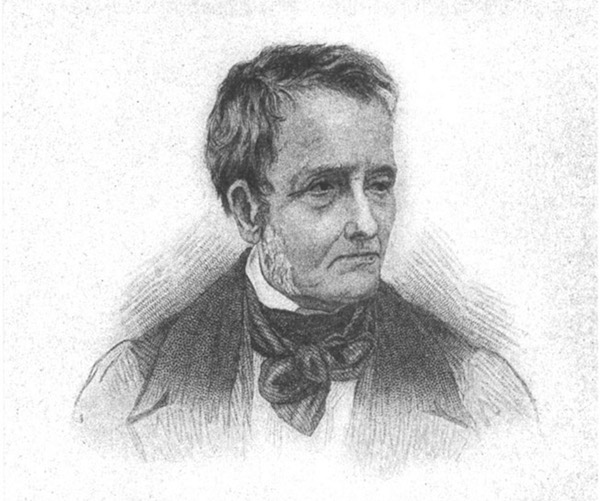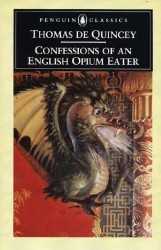Book Review: Thomas De Quincey — A Memorably “Guilty Thing”
Frances Wilson’s biography of Thomas De Quincey is superb, written with enormous empathy and insight, as well as an almost uncannily intimate knowledge of the various places in the writer’s life.
Guilty Thing, A Life of Thomas De Quincey by Frances Wilson. Farrar, Straus & Giroux, 397 pages, $30.
By Roberta Silman

In 1798 English literature took a fascinating and crucial turn. It came in the form of a slender book of poetry called Lyrical Ballads by two anonymous authors who, two years later, identified themselves as William Wordsworth and Samuel Taylor Coleridge. In his now famous Preface to Lyrical Ballads, Wordsworth announced that here was a different kind of poetry, not merely based on spontaneous feelings and intelligence and reason, as well as meter and rhyme, but on the passions of the inner soul which would celebrate Nature and our profound connection to it. Moreover, it would speak to us in language that was humble and rustic; in other words, more accessible to the common man. And, implied, was a kind of moral mandate: that poets with their extraordinary sensibility would somehow reveal to us in their poems how to live. These were revolutionary ideas, too radical for some, embraced by others. But in fairly short order they became a benchmark of the movement around the turn of the 19th century that we now call Romanticism, affecting not only literature but painting (think Turner) and music (think Berlioz).
For me the mandate of the English Romantic poets was best expressed by my teacher at Cornell, who was one of the great scholars of English literature, M.H. Abrams. (He recently died at over 100 and famously rode his bicycle on Ithaca’s hills — maybe the key to his longevity — and played the recorder and edited many of the Norton editions of literature used all over the country in college classrooms.) In his prize-winning book of 1953, The Mirror and the Lamp, he put it succinctly: “Until the Romantics literature was typically understood as a mirror reflecting the real world in some kind of mimesis; whereas for the Romantics, writing was more like a lamp: the light of the writer’s inner soul spilled out to illuminate the world.”
Mike Abrams was a passionate teacher who adored his subject, and as a young woman discovering the world of English literature (which became my major) I fell in love with the poetry of not only of Wordsworth and Coleridge, but also of Shelley and Keats and Byron. These supremely talented poets seemed, not only in their work but by their very example, to teach us how to live. And in so doing, to somehow console us and sympathize with us, giving us poems and letters and essays to turn to when life becomes difficult or even unbearable. Indeed, the older I get, the more important those Romantic poets have become, and over time I became a ravenous reader of their biographies and critical works about them, e.g. the work of Richard Holmes and Walter Jackson Bate, and also of their heirs, like Emile Bronte and Walt Whitman and Melville and Poe and Virginia Woolf and Jorge Luis Borges.
Contemporaneous with these poets were prose writers, like William Hazlitt and Charles Lamb and, lurking in the background, a writer I knew only in a cursory way: a tiny man (4’11”) who was born on August 15th, the same day as Napoleon, in 1785, fifteen years after the hero’s birth; a man who was addicted to books and poverty and death, especially murders, and opium; a supremely gifted scholar who probably had a photographic memory and a remarkably vivid imagination; a man who was one of the most exasperating personalities of his time, who had a love-hate relationship with Wordsworth and Coleridge. He also wrote exquisite essays that are as much a part of the enduring Romantic tradition as the famous poets he emulated: Confessions of An English Opium-Eater, Autobiographical Sketches, and a score of other articles, reviews, and short biographies that caused Virginia Woolf to write an essay about him entitled “Impassioned Prose.”

Thomas De Quincey — he grew up with an awareness of terror, of the unpredictability of life, of the possibility of murder. Photo: Wiki Commons
He was born near Manchester with the name Thomas Quincey but his up-wardly mobile mother Elizabeth added the De after she was widowed when Thomas was eight. From then on he was Thomas De Quincey, and wherever he went he became known — for his academic ability, for his wide reading, for leaving Oxford without graduating, for his addiction to laudanum, or opium, which began when he needed relief from stomach pains at the age of nineteen, for his preoccupation with the death of young girls, which surely was entangled with the death of his sister Elizabeth when he was six, for his sense of his own brilliant singularity, his dark sensibility, and for his inability to live within the accepted conventions of 19th century English life.
Such a man is not an easy subject for a biographer, but, as in many things in his life, Thomas De Quincey has been lucky. This new biography of him by a young Englishwoman named Frances Wilson is superb, written with enormous empathy and insight, as well as an almost uncannily intimate knowledge of the various places in De Quincey’s life — London, the Lake District, Edinburgh. Without resorting to apology or hagiography, she gives us De Quincey in his many facets — as translator, essayist, autobiographer, husband, father, friend, enemy — so that by the end we have an indelible portrait of not only him but the times in which he lived, and the people whom he encountered, for better or worse. While reading about his relationship with the Wordsworths, for example, I felt I not only knew how De Quincey felt about that mysterious pair, William and his sister Dorothy, but how they felt about him, as well. Wilson does this by appearing to write this story in a chronological way, yet weaving so many strands so easily that we feel we are living this life rather than just reading about it.
This requires more than skill. It means immersing oneself in one’s subject in such a way that even the hardest parts — like De Quincey’s refusal to sell a book to pay the rent — become understandable to the reader. By calling De Quincey “Guilty Thing” and using two epigraphs from Shakespeare and Wordsworth she piques our interest, which is fed by details like this:
Mrs. Quincey’s primary legacy to her children was a sense of guilt: ‘Trial by jury, English laws of evidence, all were forgotten; and we were found guilty on the bare affidavit of the angry accuser,’ [De Quincey wrote.] De Quincey grew up believing himself to be a great criminal; not only must he be responsible in some way for the catalogue of ills which had befallen his family, he was also to blame for his precocity and for any praise his intelligence might receive.

He also grew up with an awareness of terror, of the unpredictability of life, of the possibility of murder — Wilson begins the book with a chilling account of the Ratcliffe Highway murders that mesmerized London in December 1811 and that, as it were, set the stage for De Quincey’s incessant wanderings in that increasingly dangerous city which he knew best as a young man. Or his strong feeling that he had a double, a doppelganger, which sometimes appeared in the form of a ghost. But some of his fears were of his own making, perhaps due to his life-long drug addiction, perhaps due to his overactive imagination, or a fatal mingling of both. As Wilson explains, towards the end of the book,
As far as De Quincey’s children were concerned, there was no ‘reality’ to his ‘groanings unutterable about creditors and enemies.’ We know from the records that there was a great deal of reality to these groanings, but Florence’s sense of things reminds us that, for those who knew him De Quincey lived in a paranoid world of his own construction. This same love of ‘concealment and lurking enemies’, she believed, explained why her father would allow no help in arranging his financial affairs. Some of De Quincey’s friends ‘gave up under the impression things were too bad to be meddled with, others that there was nothing to be arranged, others — which was the truth — that he didn’t like to have them arranged as it disturbed the prevailing mystery in which he delighted.’
But through it all he kept writing — mostly for Tait’s and Blackwood’s in Edinburgh — and by the early 1850s when he was in his sixties, De Quincey’s work was, in the words of one George Gilfallan “scattered in prodigal profusion through the thousand and one volumes of our periodical literature.” It took the American publishers Ticknor and Fields in Boston to bring out a compilation of his collected works, which came to twenty-two volumes. Thus, he was known better in his lifetime in the United States than in the British Isles. Spurred on by that, De Quincey did gather his work for an English edition, revised and corrected some of the earlier essays, and also wrote Suspiria de Profundis, which many of his admirers consider his best work. He also returned to that favorite subject: murder, writing his own account of the Ratcliffe Highway murders which had made such an impression on him as a young man and more recent murders and poisonings, sometimes on the side of the murderer, sometimes on the side of the victim. But always with his peculiar stamp, the feeling he gives you when you’re reading that what he is writing is of supreme importance, life-or-death importance.
Only in the year or so before his death did De Quincey start to make money from his writing and, to the surprise of those who had watched him wander for so long, often to escape his creditors, he scarcely left the house in Edinburgh. As Wilson tells us at the end of her wonderful book, “Thomas De Quincey, the last of the Romantics, died aged seventy-four on the forenoon of 8 December, exactly forty-eight years to the day after the wreckage of the Marr household at 29 Ratcliffe Highway.” Thus, the circle was closed, and we are left with the pleasure that comes from reading a biography that forces us to reconsider what we know and learn more about what we don’t.
Roberta Silman‘s three novels—Boundaries, The Dream Dredger, and Beginning the World Again—have been distributed by Open Road as ebooks, books on demand, and are now on audible.com. She has also written the short story collection, Blood Relations, and a children’s book, Somebody Else’s Child. A recipient of Guggenheim and National Endowment for the Arts Fellowships, she has published reviews in The New York Times and The Boston Globe, and writes regularly for The Arts Fuse. She can be reached at rsilman@verizon.net.
Tagged: English Romanticism, Farrar Straus & Giroux, Frances Wilson, Guilty Thing A Life of Thomas De Quincey

Inspired me to go out and buy the book!